Hawaii, the Rainbow Islands
2021/6/04
Honolulu (Hawaii)
Hawaii is located at the northern end of the Polynesian Triangle, a vast cultural zone that stretches across the South Pacific. Honolulu is known as one of the world’s most popular resort areas and its name means “protected cove” in the language of the indigenous people. As this name suggests, Honolulu has long prospered as a shipping hub for the Pacific Ocean due to its terrain that is not easily affected by rough seas. We will take you on a journey to experience the various charms of Hawaii beyond the ‘resort’ aspect. Please enjoy the Polynesian culture nurtured in this southern paradise, the encounters with the people who carry on the traditions of the indigenous people, and the magnificent nature enhanced with beautiful seas!

Learning About Hawaiians’s Hearts through Hula
Hula is a popular aspect of Hawaiian culture known for its colorful costumes and graceful, flowing movements. It is said to have originally spread as a way for the Hawaiian people, who had no written language, to communicate to future generations their beliefs in gods and nature, as well as events around them. Today, hula may have a strong image as a performance or hobby, but for the Hawaiian people, it is a part of culture with historical significance. When you learn the meaning of the hula movements, you will feel a different kind of warmth and story.
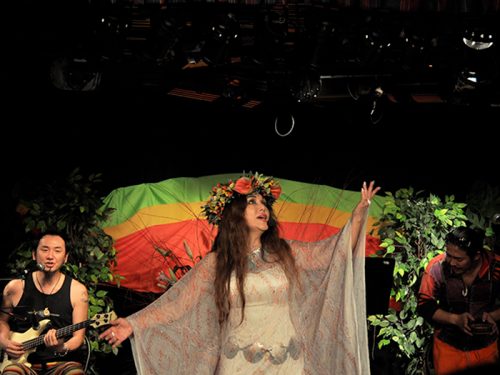
Sandii, an artist who holds the title of “Kumu Hula” (a master teacher in the art of Hula), teaches us about traditional Hawaiian culture through hula. In addition to the graceful and beautiful stage performances, her dance lessons and workshops on the meaning behind the movements are always very popular. You will learn the meaning of each movement and also the story behind the music and the Hawaiian way of thinking. On your way to Hawaii, this is a great way to experience the spirituality of the hula on the sea and to see the South Pacific Ocean where Polynesians once traveled.
Experience the Traditional Lifestyle
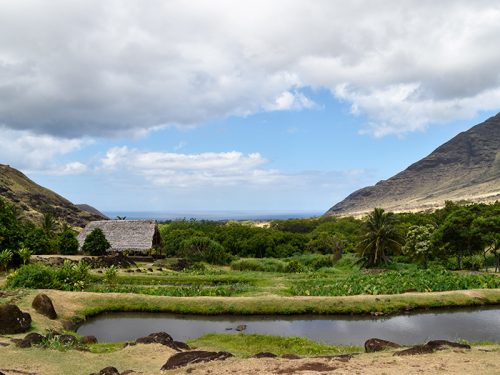
After learning about the hearts of the Hawaiian people at sea, we visit the Ka’ala Valley, located in the mountains more than an hour by bus from the port of Honolulu. Here, we learn about the Hawaiian spirit, which is the basis of the lifestyle and culture passed down from the native Hawaiians. In the past, the indigenous people of Hawaii built settlements on the land where rivers flowed in between the valleys and lived by growing taro, their staple food. The Ka’ala Valley is an important place where they reclaimed land that had once fallen into disuse and brought back to life their traditional way of living. Here you will encounter the true face of Hawaii, that you cannot find in guide books.

Today, the Ka’ala Valley is a place where many people, including local children, visit from all over. After working in the fields and working up an appetite, we try making poi, a traditional dish made from taro. Steamed taro is slightly sweet and tastes a bit like sweet potato. The poi made from mashed taro has a chewy texture like pounded rice cakes, which makes us smile at every bite. The time we spend in the Ka’ala Valley is an opportunity to learn that Hawaiians’ traditional culture is greatly connected to the majestic mountains and clear rivers.
The Nature and Culture of Honolulu
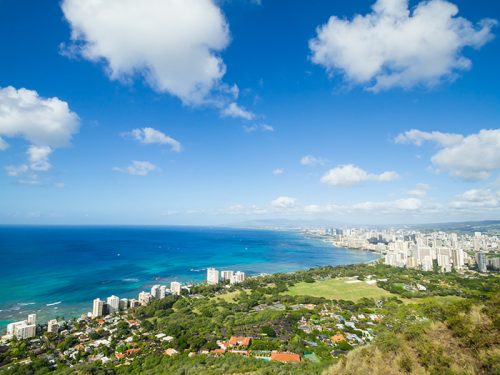
From the world-famous resort area of Honolulu, it is a must to visit the classic tourist spots. Diamond Head is an extinct volcano formed by an eruption about 300,000 years ago and is the symbol of Oahu. Its elevation is 232 meters, and the trekking course is only a little over a kilometer, so you can climb it without much difficulty. The panoramic view from the top will remind you of the beauty of this island. Don’t forget to spend some time at Waikiki Beach below Diamond Head, Hanauma Bay, Lanikai Beach, and other beautiful beaches.
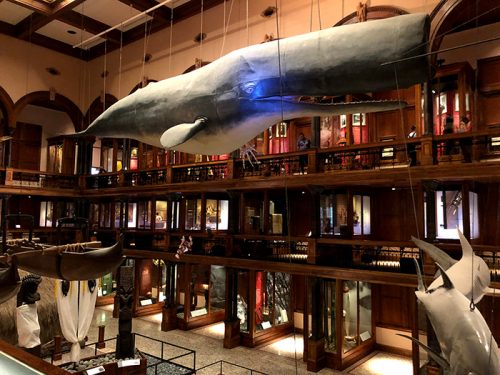
The Bishop Museum, located in the suburbs of Honolulu, is another place where you can experience the rich culture of Polynesia. Founded in the late 19th century by the last direct descendant of the Kamehameha royal family, the Bishop Museum boasts a collection of over 24 million pieces of art and crafts from all over Pacific Polynesia. The range of arts and crafts from the time of Polynesian immigration to the Hawaiian Islands through the Hawaiian dynasty, especially the items inherited within the royal family, is a must-see.
No Rain, No Rainbow
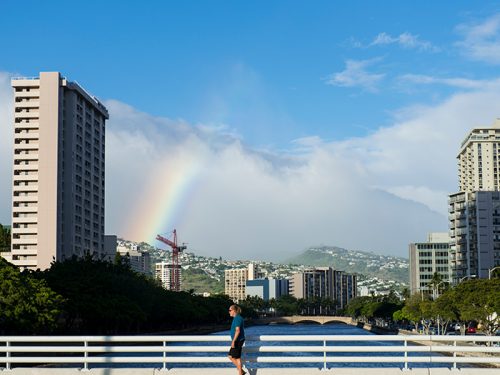
In Hawaii, the weather is changeable. There is often a shower of rain but after it passes, you are likely to see a big rainbow in the sky. Rainbows are loved by Hawaiians as a sign of good luck, and there is even a saying, “No Rain, No Rainbow,” meaning that happiness comes after hardship. The rainbow also symbolizes that Hawaii is a place where people of many different origins come together. This positivity and generosity may be the main reason why Hawaii attracts people from all over the world.
PEACEBOAT, Kawano Momoko, Nakamura Ryo, Nakasuji Kota, Suzuki Shoichi
